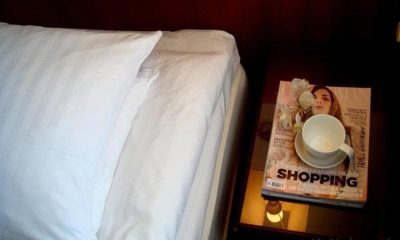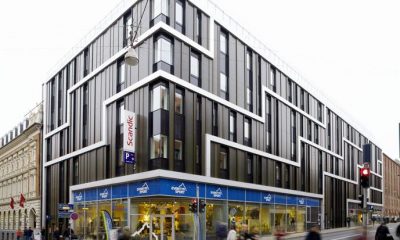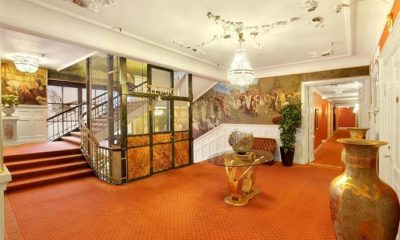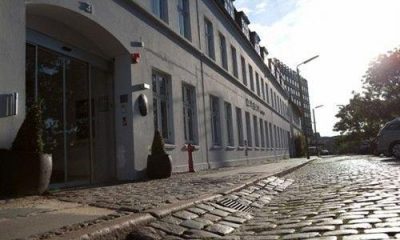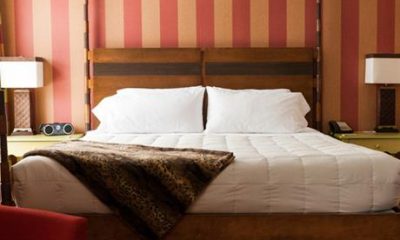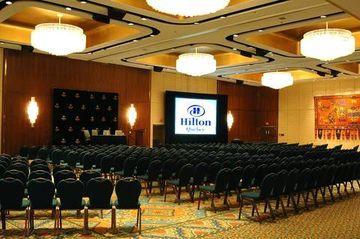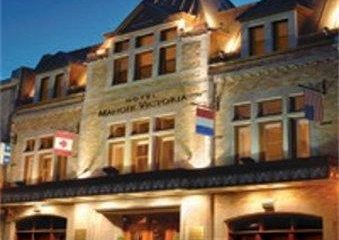Visit to Hong Kong
20 Ultimate Things to Do in Hong Kong
- /home/discountdealsonh/public_html/wp-content/plugins/mvp-social-buttons/mvp-social-buttons.php on line 27
https://www.discountdealsonhotels.com/wp-content/uploads/2017/08/10-nan-lian-garden-hong-kong.jpg&description=20 Ultimate Things to Do in Hong Kong', 'pinterestShare', 'width=750,height=350'); return false;" title="Pin This Post">
- Share
- Tweet /home/discountdealsonh/public_html/wp-content/plugins/mvp-social-buttons/mvp-social-buttons.php on line 69
https://www.discountdealsonhotels.com/wp-content/uploads/2017/08/10-nan-lian-garden-hong-kong.jpg&description=20 Ultimate Things to Do in Hong Kong', 'pinterestShare', 'width=750,height=350'); return false;" title="Pin This Post">
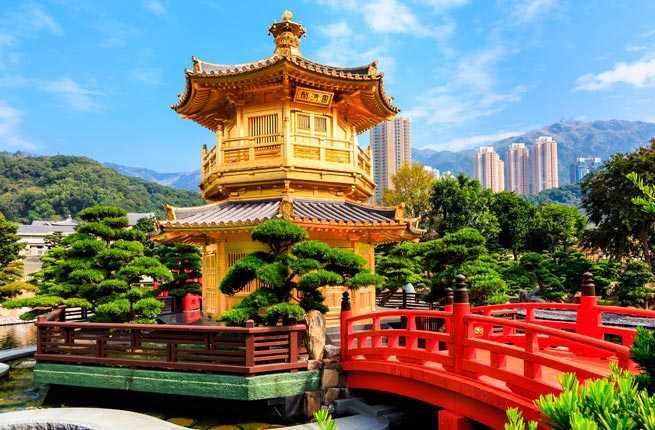
“A New York minute is a Hong Kong second” is a saying you’ll hear from expats who live in this thrilling, idiosyncratic city of 7 million residents, and it’s not hard to see why. Hong Kong teems with energy from the moment you arrive, and it never lets up. Shopping is on the list, as are dim sum, sightseeing, and the latest, hippest crop of restaurants and bars. Landmarks and skylines need to be photographed, there are countless street markets to explore or get lost in, and ferries and boat rides are waiting. Needless to say, it’s impossible to do everything, but there are some experiences that simply shouldn’t be missed. Whether you’re visiting Hong Kong for the first time or the tenth, here are 20 things you absolutely can’t miss.
By Michael Alan Connelly
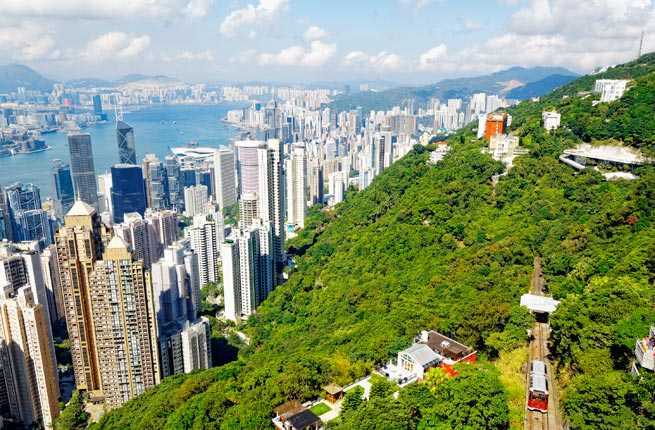
See the view from Victoria Peak
If there’s only one thing you must do in Hong Kong, it’s to take in the famous view from Victoria Peak, arguably the city’s most famous attraction. Rising 1,805 feet above sea level, the summit affords breathtaking views of Hong Kong Island, Kowloon, Victoria Harbour, and, on very clear days, Kowloon’s eight mountains. There are several ways to reach the top, but the classic method is a seven-minute ride on the Peak Tram, the world’s steepest funicular railway. There’s an ongoing argument about whether the view is better during the day or at night—see both if you have the time and decide for yourself.
PLAN YOUR TRIP: Visit Fodor’s Hong Kong Travel Guide
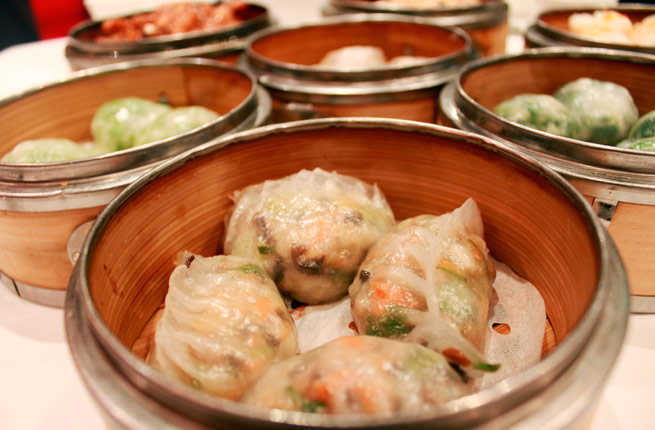
Eat dim sum
Translated literally, dim sum means “touch your heart,” but it refers to a family-style meal consisting of dumplings and other dishes served in steamer baskets or on small plates. Dim sum originated as a morning or early afternoon meal, but today you can have it any time of day. And there’s no better place in the world to enjoy it than Hong Kong. While some restaurants serve dim sum from pushed carts and others allow guests to order from a menu, you can expect a similar roster of options including har gow (steamed shrimp dumplings), char siu baau (barbecued pork buns), spare ribs, turnip cakes, and much more.
There are countless places where you can order dim sum, but your best bet is to head directly to Tim Ho Wan, known as the cheapest Michelin–starred restaurant in the world (there are twelve locations in Hong Kong, but only the North Point, Sham Sui Po, and Tai Kwok Tsui locations are on Michelin’s list). For an old-school dim sum experience, try Luk Yu Tea House (24-26 Stanley Street; +852 2523 5464); for nouveau dim sum made with high-end international ingredients, try Mott32.
PLAN YOUR TRIP: Visit Fodor’s Hong Kong Travel Guide
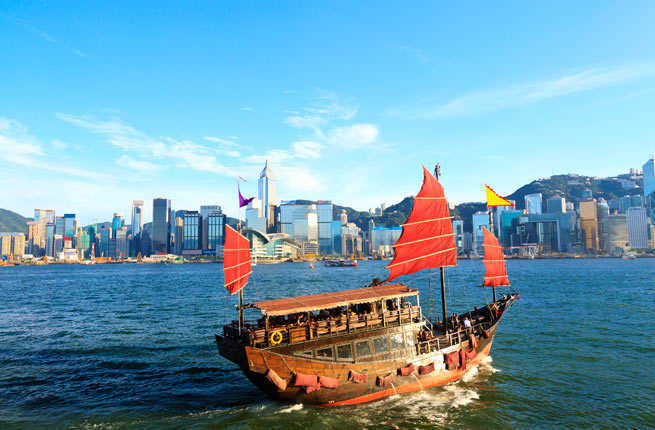
Charter a junk boat
A popular weekend activity for locals is to escape the city center by renting a “junk,” a term which used to apply to Chinese fishing boats but now refers to any motorized water vessel designed for leisure. But just because you’re a visitor doesn’t mean you can’t partake in this tradition. Castelo Concepts offers seven-hour rides, including food and open bar, for up to fourteen adults (approximately $1,260), while Traway’s eight-hour charters are less than half that price (their website is in Chinese, but if you call them, you can arrange something in English). Another option is to consult with your hotel concierge for the best rates. No matter what, riding a junk is a wonderful way to enjoy the water and see some places off the beaten path.
PLAN YOUR TRIP: Visit Fodor’s Hong Kong Travel Guide
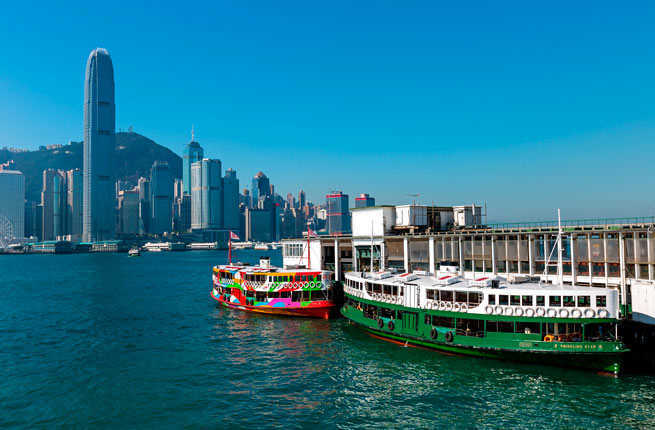
Ride the Star Ferry
The Star Ferry, which transports 20 million riders across Victoria Harbour every year, has been around since 1888 and shows no signs of disappearing anytime soon. Even though the MTR, Hong Kong’s public transportation system, is one of the best in the world and a more efficient way to travel between Kowloon and Hong Kong Island, you don’t want to miss a ride on the ferry. For a nominal fee, you’ll be treated to one of the most scenic boat rides in the world, allowing you to simultaneously gaze at the skylines on both sides of the water. If you’re riding it for the views alone (as opposed to trying to get from point A to point B), go at night and feel free to disembark and immediately hop on another ferry going back to your starting point.
PLAN YOUR TRIP: Visit Fodor’s Hong Kong Travel Guide
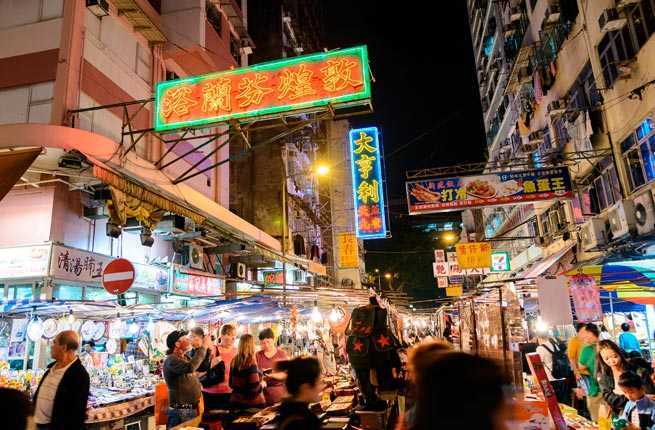
Hit the street markets
Just about anything you could ever want to buy can be found in Hong Kong’s lively street markets. Ladies’ Market, home to more than 100 stalls selling clothing and accessories, and the Temple Street Night Market, where you can find everything from noodles to watches, are the most famous. Elsewhere, Cat Street is known for antiques, Apliu Street Market is the place for electronics, and Fa Yuen Street is known as Sneakers Street. There are also dedicated markets for flowers, goldfish, birds, jade, kitchenware, and more.
PLAN YOUR TRIP: Visit Fodor’s Hong Kong Travel Guide
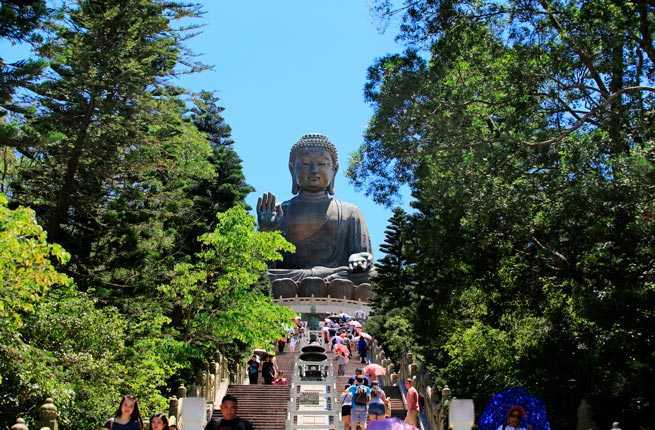
Gaze upon the Big Buddha
West of the city center lies the mountainous terrain of Lantau Island, home of the Tian Tan Buddha, a 202-ton statue of the deity. Commonly referred to as the “Big Buddha,” the massive bronze statue is the main attraction here, but there are some other touristy attractions nearby that you can skip. The best way to get to the Big Buddha is to hop on the Ngong Ping 360 gondola, which offers impressive views of North Lantau Country Park, Hong Kong International Airport, the South China Sea, and the surrounding countryside.
PLAN YOUR TRIP: Visit Fodor’s Hong Kong Travel Guide

Hike the Dragon’s Back
Hong Kong is often regarded as a city of skyscrapers and shopping malls, but it offers remarkable hiking options for active locals and visitors. Stretching for 31 miles, the Hong Kong Trail cuts through five country parks on Hong Kong Island, the most popular portion of which is known as the Dragon’s Back. The highlight of this hike is reaching Shek O Peak, from where you can enjoy 360-degree views of beaches, bays, verdant countryside, waterfront communities, and the South China Sea. The shortest version of this hike can be completed in less than two hours, though you could extend it to six hours if you wanted to start from Happy Valley and make your way south.
PLAN YOUR TRIP: Visit Fodor’s Hong Kong Travel Guide
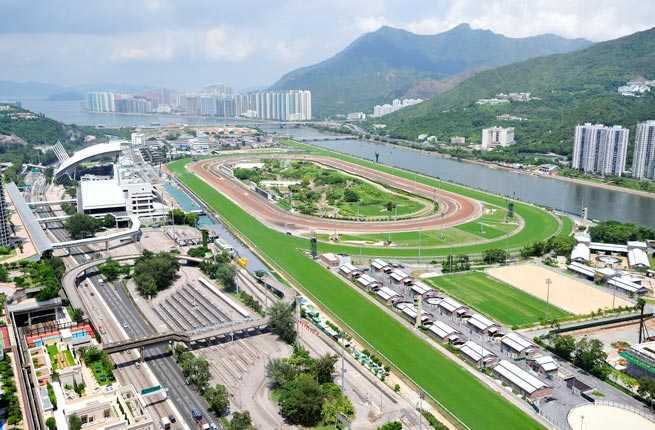
Place your bets at Happy Valley Racecourse
Aside from the summer months, when there are no horse races, Happy Valley Racecourse is the place to be in Hong Kong on a Wednesday night. Popular with both expats and locals, this weekly event feels more like a party than a sporting event; sure, people come to gamble, but it’s more about the scene than anything else. Some weeks offer themed nights, like Oktoberfest or Carnival, and the crowd dresses accordingly.
PLAN YOUR TRIP: Visit Fodor’s Hong Kong Travel Guide
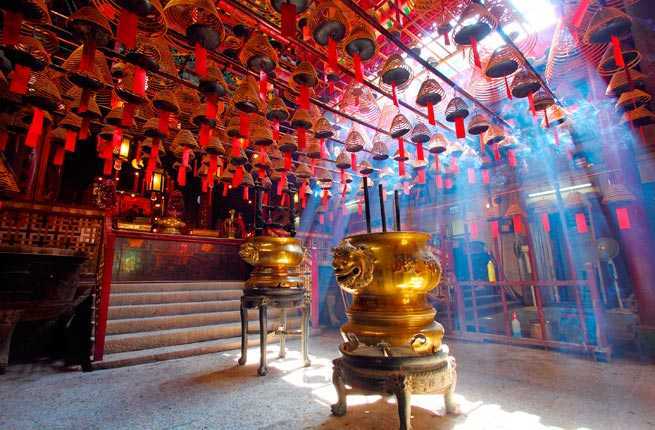
Visit historic temples
For all its fast-paced modernity, Hong Kong is still home to historic religious sites that pre-date the British occupation. Man Mo Temple is the oldest in the city, and it is dedicated to the Taoist gods of literature (Man) and war (Mo). Anyone is welcome to visit, but true believers come here to leave offerings and burn incense, while fortune tellers (who are highly regarded in Hong Kong) sit in front awaiting customers. If you want to be dazzled, head to the Ten Thousand Buddhas Monastery in the New Territories, where 500 life-size golden Buddhas sit on either side of the 400 steps you’ll climb to reach the temple. Inside the main temple, there are nearly 13,000 gilded ceramic statuettes, even more than the temple’s name promises.
PLAN YOUR TRIP: Visit Fodor’s Hong Kong Travel Guide
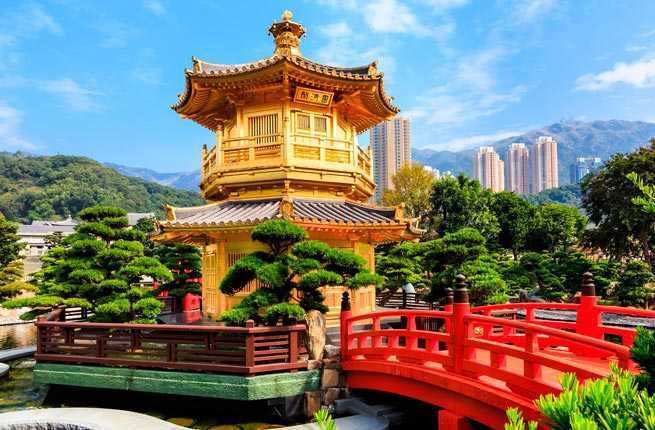
Relax in the park
Hong Kongers like to escape to beaches, small islands, and the countryside to unwind, but that doesn’t mean there’s no green space in the city center for visitors to enjoy. Offering respite from the frenetic streets of Central, Hong Kong Park offers a sprawling mix of rock gardens and leafy pathways, making it a popular place for locals to practice tai chi or read in a secluded spot. On the edge of Causeway Bay, beautifully landscaped Victoria Park is the largest urban green space on Hong Kong Island, and it has recreational facilities for soccer, basketball, swimming, lawn bowling, and tennis. Perhaps the prettiest escape in the city is Nan Lian Garden, a 35,000-square-meter retreat designed in Tang Dynasty style, with traditional Chinese architecture and landscaping. All three parks are easily accessible via public transportation.
PLAN YOUR TRIP: Visit Fodor’s Hong Kong Travel Guide
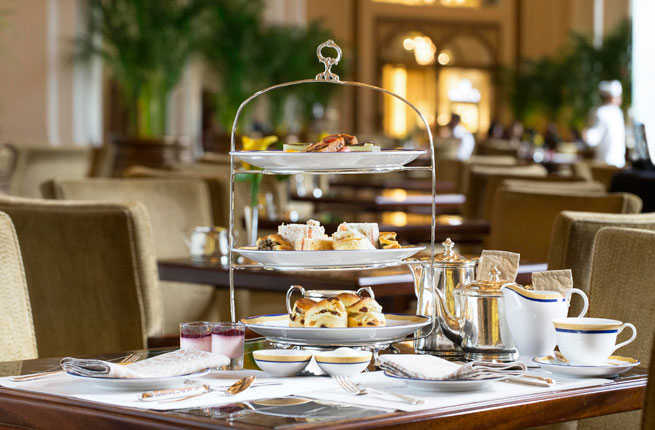
Have high tea
One of the enduring legacies of British occupation is the widespread availability of high tea in Hong Kong. Most of the city’s best restaurants and hotels offer afternoon tea service daily, but the quintessential spot is in the lobby of The Peninsula, where you’ll see a queue forming before 2 p.m., when tea service begins ($81 for two people). Another popular spot is the lobby of the InterContinental, where floor-to-ceiling glass walls afford wonderful views of Hong Kong Island. It’s best to do some research beforehand, as high tea in Hong Kong ranges from very traditional (exactly what you’d find in London) to completely contemporary.
PLAN YOUR TRIP: Visit Fodor’s Hong Kong Travel Guide
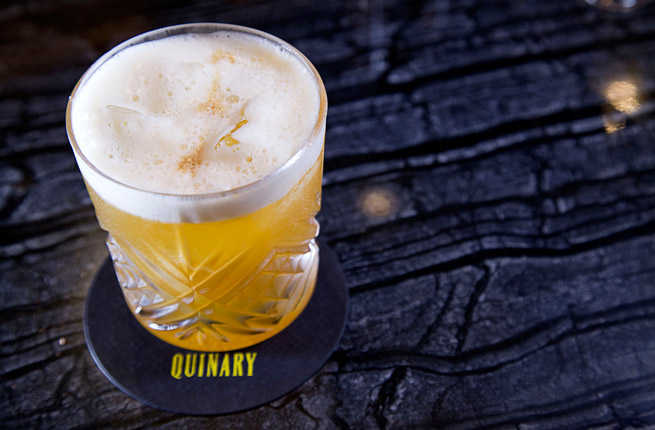
From high-end hotel bars to underground speakeasies, Hong Kong’s cocktail culture ranks among the best in the world. For drinks that impress, go see the bartenders at Quinary, where cocktails are crafted with liquid nitrogen and other fancy instruments. For an exclusive feeling, try to locate 001, hidden behind an unmarked door, as is Ping Pong 129. Aberdeen Street Social is the place for balanced, garden-fresh cocktails made with herbs grown onsite, while Duddell’s serves a mix of traditional and innovative tipples on its very chic outdoor patio.
PLAN YOUR TRIP: Visit Fodor’s Hong Kong Travel Guide
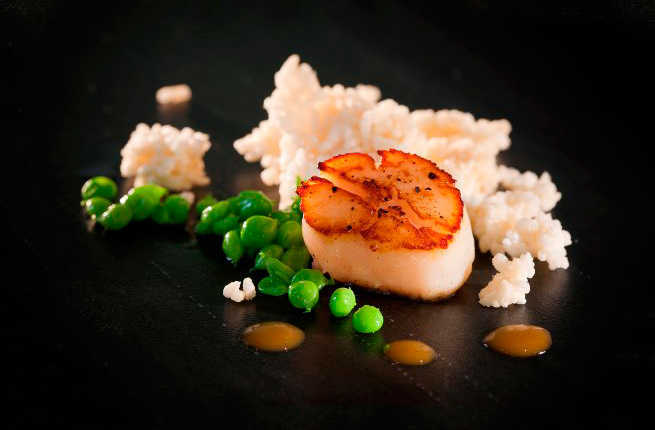
Enjoy Michelin-starred cuisine
You don’t need to spend a lot of money to eat well in Hong Kong, but if you’re looking for some of the finest meals in the world, you’ll find them in the city’s 58 restaurants that have been awarded Michelin stars—and even those are cheaper than restaurants of similar quality in other cities. Bo Innovation (molecular gastronomy), L’Atelier de Joël Robuchon (haute French), and Lung King Heen (arguably the best Cantonese restaurant in Hong Kong), rank among the city’s finest restaurants.
PLAN YOUR TRIP: Visit Fodor’s Hong Kong Travel Guide
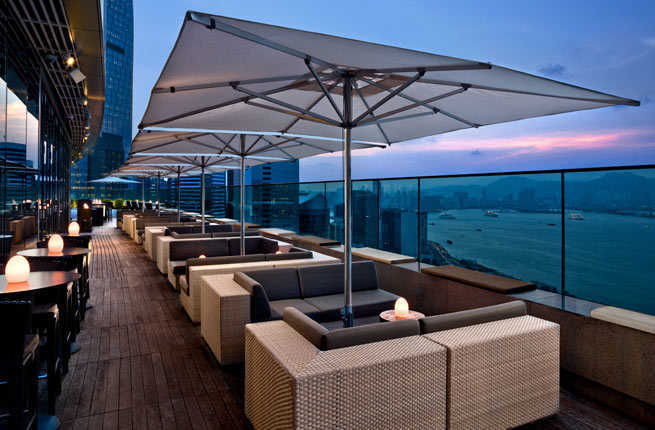
Drink on a rooftop
Depending on the time of year, average temperatures range from 60–90 degrees, ideal conditions for enjoying wine, beer, and cocktails outside, as long as it’s not raining. Accordingly, Hong Kong has a bevy of rooftop bars to choose from. Sevva, Sugar, and Armani/Privé are all popular options, but the best rooftop bar is the one that can be tough to get into: The China Club. As an exclusive establishment, it requires that you come with one of its members to gain entry, so if you have any local connections, use them—it’s worth it.
PLAN YOUR TRIP: Visit Fodor’s Hong Kong Travel Guide
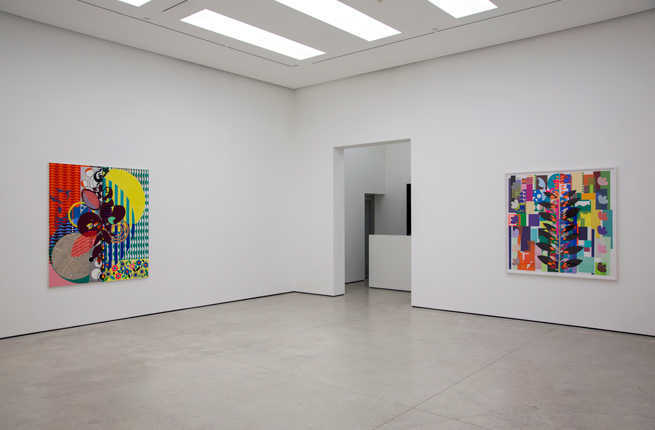
Check out the art scene
Hong Kong used to have a bad reputation for being all commerce and no culture, but that stereotype has outlived its usefulness. Today the city hosts an Art Basel show every spring, art is an increasingly important element of hotels and restaurants, and the gallery scene is thriving. The city is home to big names in the art world like Gagosian and White Cube, while up-and-coming areas like Chai Wan, Sai Ying Pun, and Aberdeen are where local artists and galleries are setting up shop. Duddell’s, meanwhile, has an art gallery outside its main dining room, and Bibo is a work of art in and of itself. For a look at historical Chinese works, go to the Hong Kong Museum of Art, which houses more than 15,000 objects.
PLAN YOUR TRIP: Visit Fodor’s Hong Kong Travel Guide
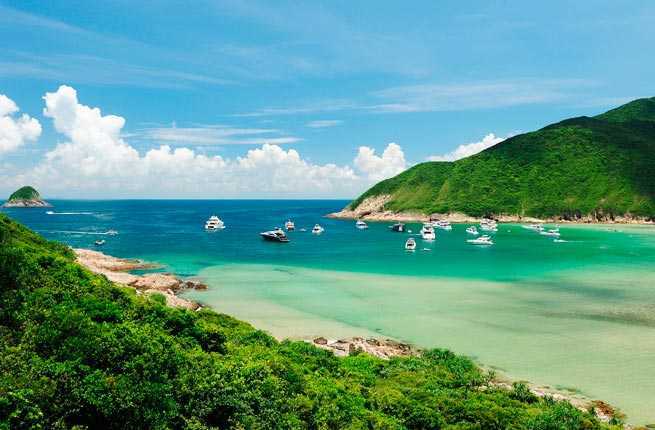
Escape to the beach
Less than an hour from the city center, you’ll find some of the world’s most gorgeous beaches, which can be reached by taxi, boat, or public transportation. Unlike many beach destinations, Hong Kong is home to many different types of beaches, so there really is something for everyone, from surfers to families to party animals. Shek O is undoubtedly one of the most popular options, along with stretches of sand in Stanley and surrounding Repulse Bay. For a more secluded experience, head to pristine Tai Long Wan on the eastern coast of Sai Kung Peninsula, considered to be one of the most beautiful places in all of Hong Kong.
PLAN YOUR TRIP: Visit Fodor’s Hong Kong Travel Guide
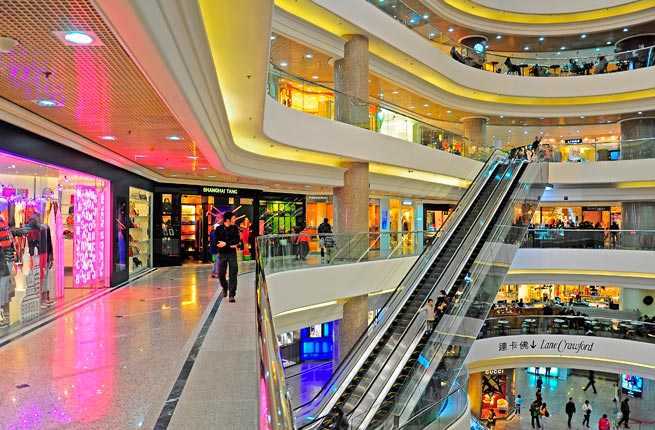
Shop ’til you drop
There’s a reason mainland Chinese cross the border to visit Hong Kong, and it’s all about shopping. From the high-end designer stores crowding lower Kowloon and Central to the mazelike malls of Causeway Bay to the seedy environs of Chungking Mansions on Nathan Road, shopping is an important part of Hong Kong’s heartbeat. For one-stop shopping, make your way to Times Square, a gargantuan, twelve-story mall where stores are organized thematically. If time permits, a visit to one of Hong Kong’s tailors is worth it to buy a garment that’s customized for you.
PLAN YOUR TRIP: Visit Fodor’s Hong Kong Travel Guide
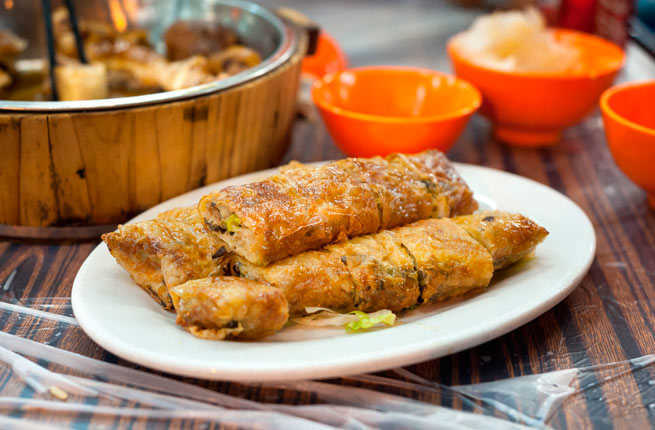
Have breakfast at a dai pai dong
Once ubiquitous in Hong Kong, the humble dai pai dong (literally, “restaurant with a big license plate,” though understood to refer specifically to open-air stalls serving cooked food) has almost disappeared today, with only a couple dozen remaining. You can eat at a dai pai dong for any meal, but its most iconic dishes are typically served for breakfast. Be sure to order congee, milk tea, and Hong Kong–style French toast, which will be the best kind you’ve ever tasted.
PLAN YOUR TRIP: Visit Fodor’s Hong Kong Travel Guide
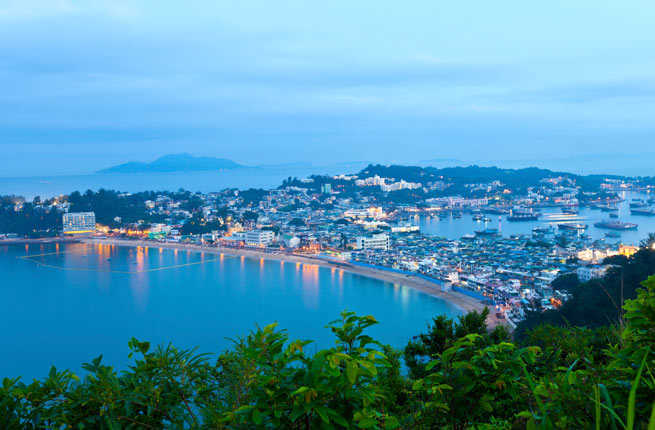
Explore the outer islands
Hong Kong is more than a city—it’s an entire region, a Special Administrative Region (SAR) if you want to get technical about it. The SAR is home to 260 islands, each one offering something different to those who choose to venture off the beaten path. Peng Chau and Cheung Chau, both located between Hong Kong Island and Lamma Island, are popular options, and they and many other islands can be reached by ferry from the city center. One of the highlights of visiting these smaller islands is dining in fishing villages, where you can select your meal from the catch of the day. Because the islands are so different, be sure to do your research rather than pick one at random off the map.
PLAN YOUR TRIP: Visit Fodor’s Hong Kong Travel Guide
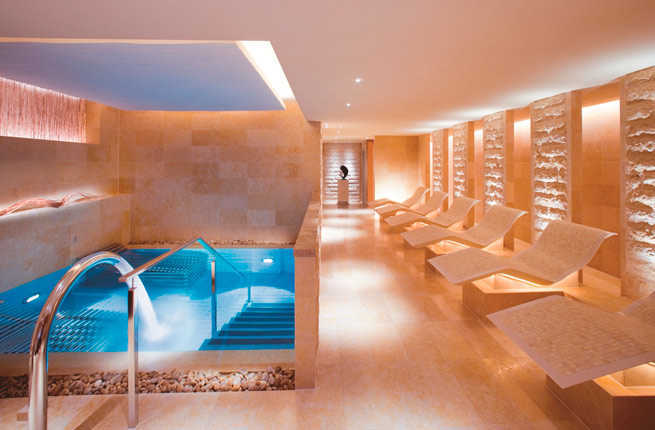
Pamper yourself at a spa
Due to the city’s fast pace and endless energy, Hong Kongers know it’s important to take time to relax, which might help to explain the incredible spas you’ll find here. You’ll see many massage shops throughout the city—it’s perfectly normal here to take twenty minutes out of your day to get a foot massage—but the best experiences await in high-end spas located in hotels, which are among the finest in the world. Standouts include The Oriental Spa at The Landmark Mandarin Oriental, where you can get a Bastien Gonzalez pedicure, and The Peninsula Spa, where serene relaxation rooms overlook Victoria Harbour.
PLAN YOUR TRIP: Visit Fodor’s Hong Kong Travel Guide
Visit to Hong Kong
Hong Kong’s 10 Best New Hotels
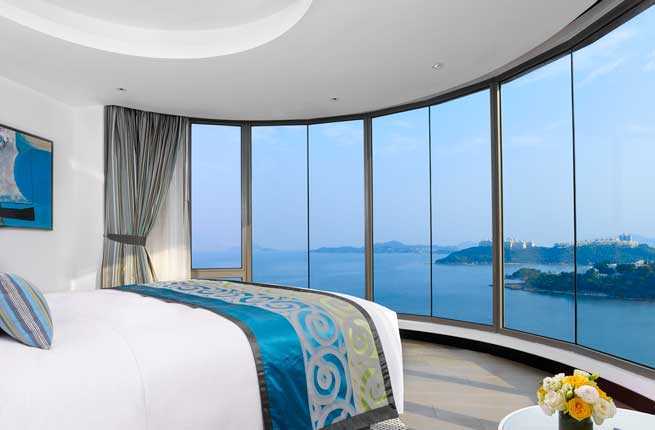
Hong Kong’s hotel scene is booming, thanks to ever-increasing numbers of visitors drawn in by the city’s nonstop dining, shopping, and cultural events, like the annual Art Basel, International Film Festival, and Wine & Dine Festival. Separated by Victoria Harbour, both sides of this visually stunning, electrifying Asian metropolis—Kowloon to the north, Hong Kong Island to the south—have seen impressive numbers of new and extensively renovated hotels this past year, including a bevy of budget-friendly boutique properties. We’ve rounded up a variety of properties, many of which have already snagged industry awards. Here are Hong Kong’s 10 best new and renovated hotels.
by Lawrence Ferber
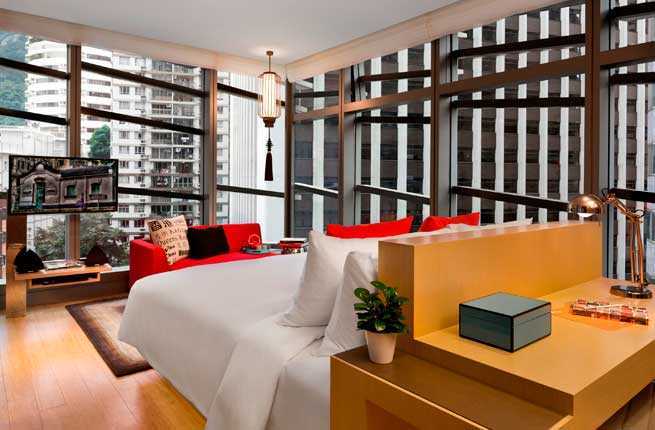
Hotel Indigo
Opened during spring 2013, the Wan Chai district’s 138-room Indigo, part of InterContinental’s boutique arm, has garnered a 2013 Asia Pacific Property Award for Best Hotel Architecture and countless passersby do a double take upon passing the glass-bottomed rooftop pool that juts out overhead. Rooms, filled with work by local artists, include complimentary Wi-Fi, while the rooftop pool demands a visit.
Insider Tip: Take note of the building’s exterior pattern, which is meant to resemble a wraparound dragon.
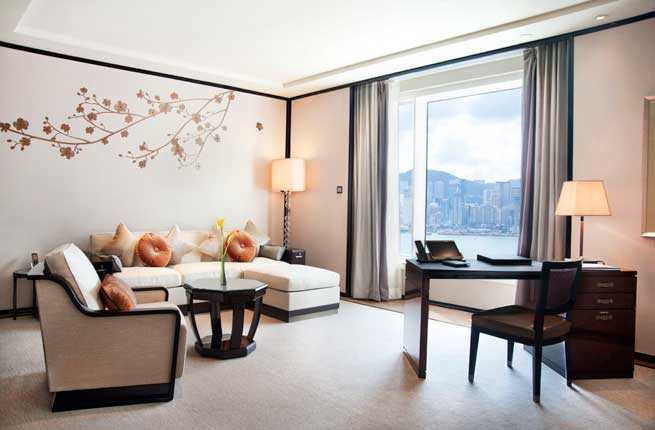
The Peninsula
A luxurious, Colonial-era grande dame smack dab in Kowloon’s Tsim Tsa Tsui district, the 86-year-old Peninsula added another chapter to its storied history—its third floor served as Japanese headquarters during part of WWII—by unveiling a $58-million, tech-forward, contemporary overhaul in 2013. Rooms and suites, dominated by cool creamy tones, dark woods, and minimalist graphics, now feature tricked-out media centers with Blu-ray players and complimentary movies; touchscreen tablets controlling everything from lighting to room service orders; universal power outlets and converters; and wireless phones with free VoIP international calling.
Insider Tip: The Peninsula’s daily afternoon tea, replete with raisin scones and a live chamber orchestra on the lobby balcony, remains a quintessentially classy Hong Kong experience.
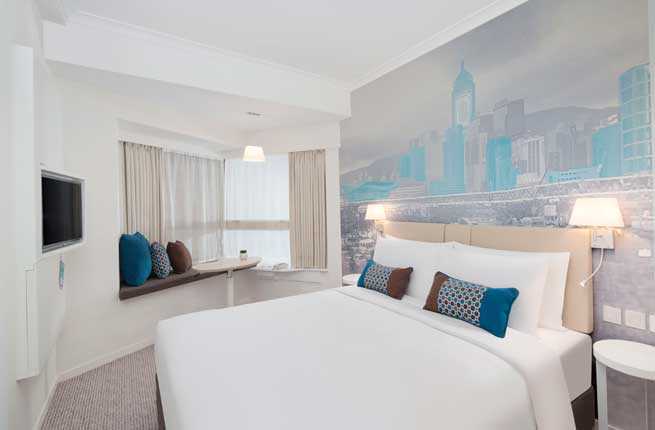
Ozo Wesley
Situated just steps from hip Star Street and the posh Pacific Place shopping center, Ozo Wesley took over the site of a former Admiralty district property, the Wesley, in September 2013. The 251 cleanly designed rooms in cool, neutral tones—a graphic of Hong Kong Island decorates one wall—make smart use of their modest square footage with cute, utilitarian details including headboards with pull-down trays for snacking in bed, free coffee and tea, and a small mini-fridge. Guests also receive a 40% dinner discount at the in-house, upscale dim sum venue Zaan.
Insider Tip: The block across the street is being developed into a hip, Soho-esque strip, scheduled for completion by 2016.
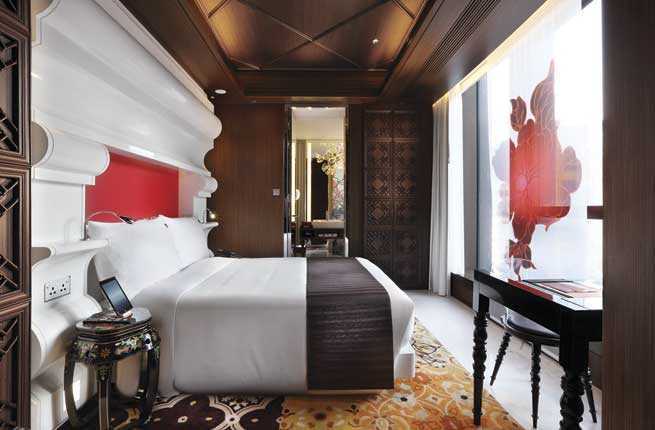
Mira Moon
Kid sister to Kowloon’s glam and clubby Mira, the 91-room Mira Moon straddles Hong Kong Island’s Wan Chai and bustling Causeway Bay districts. Opened in late 2013 with a theme dedicated to the mythical story of China’s Moon Festival, the hotel was designed by Marcel Wanders with a nod to traditional Chinese iconography blended with chic, colorful, and whimsical contemporary art. Winged flying pigs suspend lamps over the lobby’s check-in desk, while stunning textures and eye-popping graphics inform every crevice.
Insider Tip: In-house restaurant Super Giant serves up Guillermo Delavault’s imaginative Cantonese-Spanish fusion tapas creations, like Typhoon Shelter garlic frog legs and a Chinese waffle with Serrano ham.
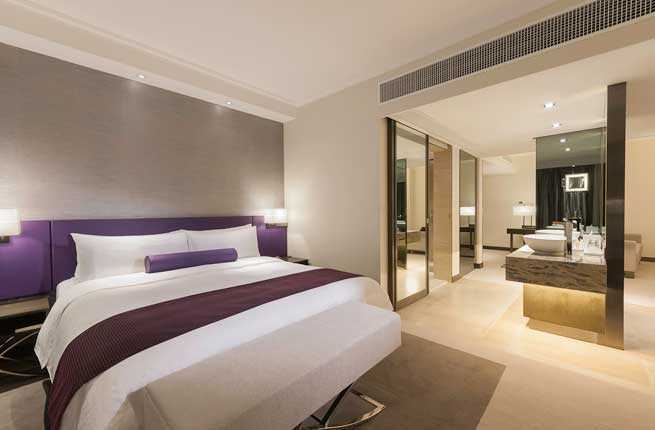
Marco Polo Gateway
Part of Kowloon’s sprawling Harbour City shopping complex, this 400-room 1980s property received a thorough renovation between 2012 and September 2013. The Gateway, Hong Kong now boasts a fresh contemporary palate, dominated by greys, purples, and pale wood, while rooms include Nespresso machines, free Wi-Fi, and bedside power outlets.
Insider Tip: Harbour City is a goldmine for French macaron fans, with offerings from agnes b., Fauchon, Paul Lafayet, Pierre Hermé, Jean-Paul Hevin, and Laduree.
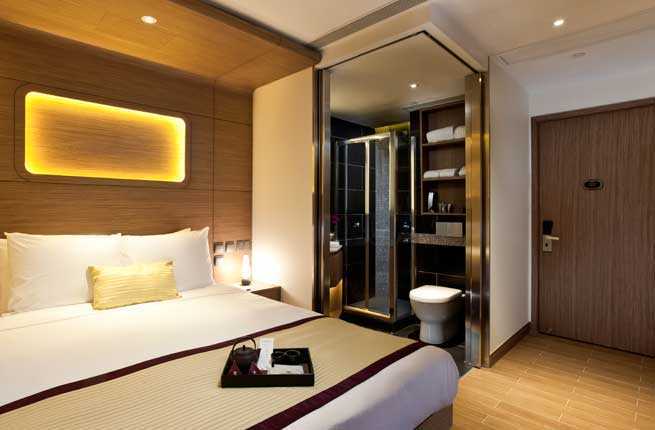
Hotel Pennington
Bustling entertainment district Causeway Bay is home to Hong Kong’s first design boutique hotel, the 10-year-old JIA (now known as J Plus). The budget-friendly Pennington (rooms start at $140) joined the party in November 2013. The room design calls to mind Portland, Oregon as seen through 2001: A Space Odyssey—woodsy, yet retro-futuristic with rounded edges and glowing accents—and gizmo-friendly amenities and details (USB and traditional power outlets, Wi-Fi, LAN) have already helped snag several hotel awards.
Insider Tip: One of Hong Kong’s newest shopping centers, Hysan Place, is nearby; check out its multi-level flagship of Taiwan’s incredible Eslite Bookstore and slurp-worthy, Michelin-starred wonton noodle spot, Ho Hung Kee.

Auberge Discovery Bay
Rich with greenery, hiking trails, and beaches, Discovery Bay on Lantau Island, accessible by MTR or 24-hour ferry, became home to a 325-room resort property in early 2013. Oceanic colors and dominate the Auberge Discovery Bay, while rooms boast sweeping floor-to-ceiling views of the ocean or mountains. Sound romantic? That’s what they’re hoping: Auberge snagged the 2013 Bridal Award for Best New Hotel Wedding Banquet and Darizi’s Most Romantic Wedding Venue Award for its facilities and services, including a stunning, glass-enclosed chapel, spa, and horse-drawn carriage rides.
Insider Tip: Urban Hong Kong isn’t exactly bicycle-friendly, but Auberge can arrange a bike tour along Discovery Bay’s lovely, car-free trails.
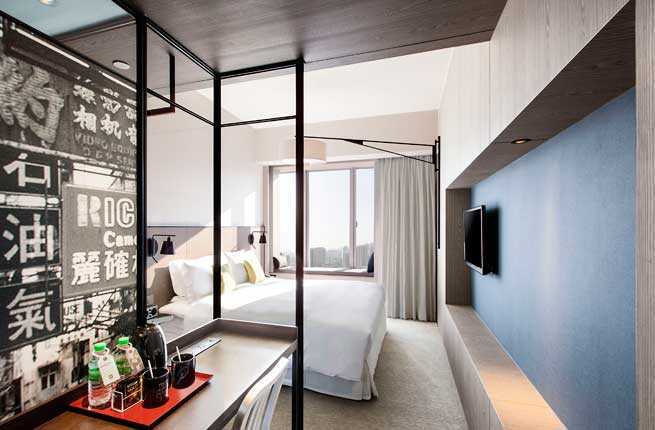
pentahotel
Helping to vitalize East Kowloon, which saw the addition of the futuristic, $1 billion-plus Kai Tak cruise terminal last summer, the 32-story, 695-room Pentahotel opened in August 2013. Embracing a “contemporary rustic” design aesthetic, young vibe, and budget traveler-friendly price point (rooms start at $100 for HK and Macau residents, $116 for international visitors), the European chain pays tribute to Hong Kong’s local culture in its lounge’s eatstreet, a 230-seat restaurant that offers street food and Cantonese fare all day.
Insider Tip: Make new friends while taking advantage of Wii and music stations, pool tables, and more in two game rooms and the chain’s signature “pentalounge.”
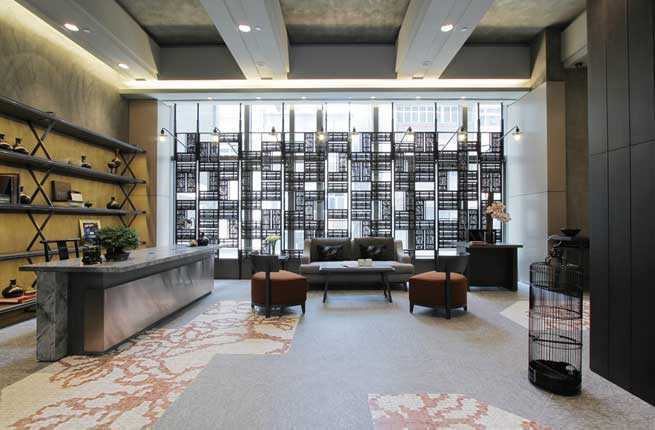
V Wanchai2
Abacus-inspired lattices decorate the exterior and lobby of the V Wanchai2 opened in March 2013, from Hong Kong’s V serviced apartment brand. The 79 budget-friendly rooms ($128 and up), decked out in neutral tones and clean lines, still aim to make one feel at home with amenities like complimentary wi-fi, beverages, and daily snacks and cocktails between 5–8 p.m.
Insider Tips: Some units even have washer and dryer machines.
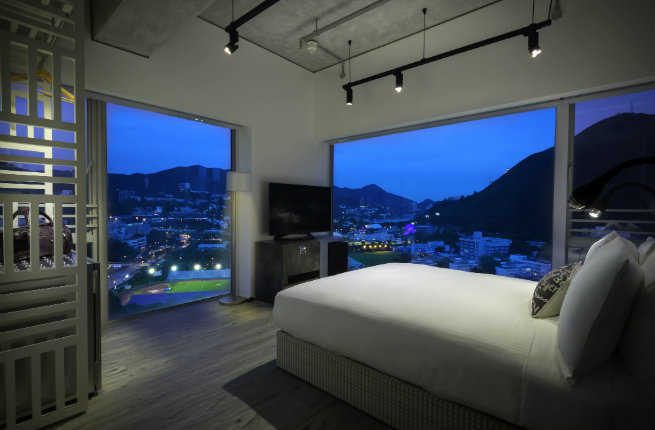
Ovolo Southside
Wong Chuk Hang, an industrial district peppered with small art galleries, creative spaces, indie shops, and tucked-away foodie treasures, is fast becoming Hong Kong’s version of Miami’s Wynwood and NYC’s West Chelsea, and with an MTR (subway) station scheduled to open in 2015, the neighborhood will truly explode. Ovolo Hotels wisely planted a stake early in 2010, converting a warehouse into a slick, ultramodern 162-room property set to open in July 2014 with a rooftop bar, clubby lounge, and event-friendly spaces.
Insider Tip: Ocean Park, Hong Kong’s premiere theme park, is within walking distance of the hotel.
Visit to Hong Kong
Checking In: The Peninsula Hong Kong
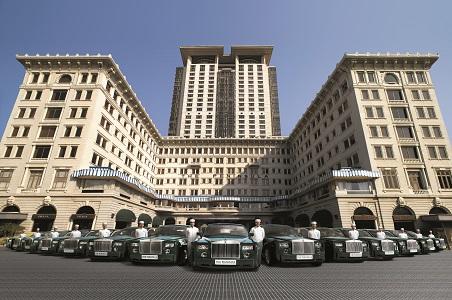
It’s no exaggeration to say The Peninsula Hong Kong counts amongst the world’s most legendary hotels. Opened in 1928, near the southern tip of the Kowloon Peninsula (hence the property’s name), the “Grand Dame of the Far East” (also the flagship property of the Peninsula Hotels group) has been offering guests white-glove service and luxury accommodations for more than eight decades. The oldest hotel in Hong Kong, The Peninsula is a temple of old-world glamour and is the city’s only historical five-star property, managing to stand out despite sharing the vicinity with so many other world-class hotels.
The Peninsula comes with a storied past—the Japanese used the building as their World War II headquarters, for instance—but it doesn’t feel like a dusty relic. Not content to rest on its laurels, the property underwent a two-phase, $58-million renovation (completed in April 2013 to coincide with the hotel’s 85th anniversary) that put cutting-edge technology front and center in the guestrooms, along with a fresh new decor that created a high-end residential feel. As a result, The Peninsula has managed to maintain its unique character without falling out of step with the times.
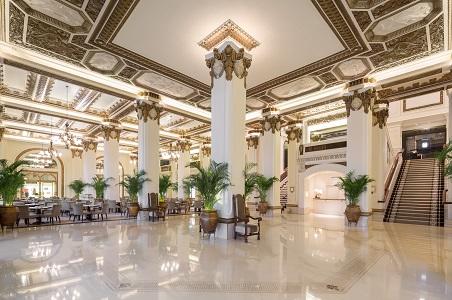
Whether or not a stay here is part of your plans, a visit to the iconic lobby, with its high ceilings and ornate columns, is in order. Afternoon brings classic high tea service, which locals and tourists queue up for on a daily basis. The hotel’s arcade, home to luxury designer and jewelry shops, also invites lingering. Like many other top-tier properties around the world, the public spaces here are just as important to the hotel’s success as the guestrooms.
Rates: There are five room types, with prices starting at $525/night. There are seven options for suites, with prices starting at $1,015/night.
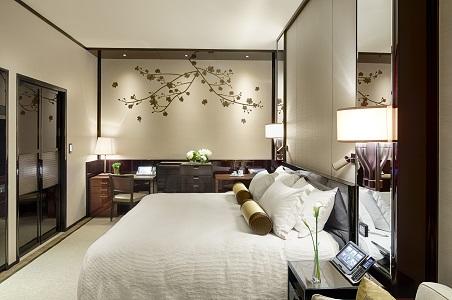
Rooms: Accommodations are split between the original, low-rise building and a 30-story tower that was added in 1994. In total, there are 300 rooms and suites; depending on their location in the hotel, rooms include views of the front courtyard, the Kowloon cityscape, or, most desirably, Victoria Harbour and the skyscrapers of Hong Kong Island. The smallest rooms measure 441 square feet, a respectable size in a cramped city like Hong Kong, while rooms in higher tiers offer even more space.
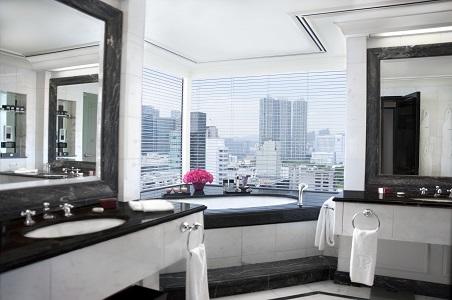
Following the renovations, guestrooms feel stylish and open, with a muted color palette of cream, walnut, and dark chocolate. The high ceilings, handsome furnishings, and elegant wall appliqués help to create the feeling of a chic urban apartment rather than a standard hotel room. The bathrooms, on the other hand, still feel decadent with white and green marble and Oscar de la Renta products.
The focus on technology has paid off with a wonderfully high-tech guest experience. Wi-Fi is fast and complimentary, and all calls (local or international) are free, thanks to the sophisticated in-room VoIP phone system. In addition to Samsung Galaxy tablets that allow guests to control assorted room features and place service requests, rooms boast in-wall touchscreen panels that can control lighting and temperature; in the bathroom, these panels also control entertainment options like TV and music. All electrical outlets are now “world” outlets, meaning you won’t need any adapters. Conveniently, a charging dock pops out of the desk, making it easy to juice up all of your devices in one place. In addition, all rooms come equipped with a touchscreen-controlled Nespresso machine, offering complimentary coffee and tea. Perhaps most impressively, every room now sports a 46-inch, 3-D flat-screen television (loaner 3-D glasses and movies can be ordered via the tablets); hi-fi surround-sound system; and Blu-ray.
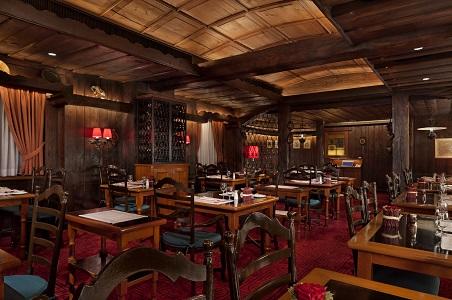
Drinks & Dining: The Peninsula Hong Kong is home to no fewer than nine restaurants and bars. In addition to all-day dining in the lobby, there is French cuisine at Gaddi’s, modern European at Philippe Starck–designed Felix (pictured below), Swiss classics at Chesa (pictured above), the ever-popular buffet offered in The Verandah, Cantonese dishes and dim sum at Spring Moon, and Japanese food at Imasa. All options are popular, but due to its small size and overwhelming charm, seats at Chesa can be especially difficult to come by. In addition to the restaurants, there’s also a small chef’s table in the hotel’s main kitchen where guests can book small, fully customized dinners with the chef of Gaddi’s.
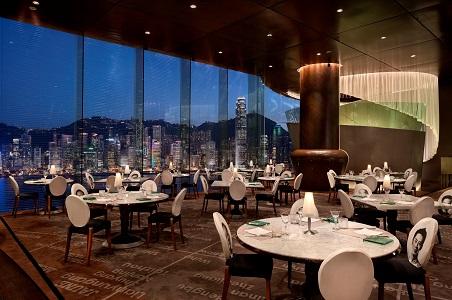
On the second floor, The Bar offers craft cocktails, rare single malt whiskies, and live piano music in a throwback setting. High on the 28th floor, Felix also offers several bars from which to take in the spectacular views of Victoria Harbour (the men’s room is also notable for its panoramas). Tucked away in the basement is Salon de Ning, a sophisticated lounge that evokes the East-meets-West glamour of 1930s Shanghai and features a nightly lineup of comic and musical performers. In-room dining is also available 24 hours a day.
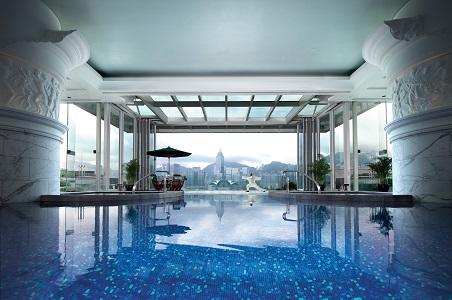
Health & Fitness: Guests have access to a bright, modern fitness center that features state-of-the-art equipment and an open-air terrace overlooking the harbor. The locker rooms contain a hot whirlpool, cold plunge pool, steam room, and sauna. The Roman-inspired pool, with its intricate columns, friezes, statues, and cornices, is a spectacular place to swim with its floor-to-ceiling windows that look out toward the skyline. In warmer weather, guests can head to the adjacent outdoor sun terrace.

The Peninsula Spa is a popular retreat for both guests and Hong Kong residents, as it offers 12,000 square feet of relaxation space with wonderful views. The treatments offered blend Eastern and Western techniques, and are among the best spa services offered in Hong Kong, a city where wellness is taken seriously.
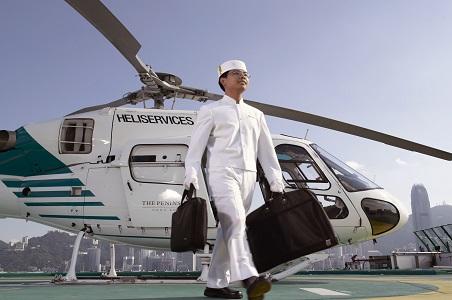
Etc.: No stay here is complete without a chauffeured ride in one of the hotel’s iconic Rolls Royces, which are painted a signature “Peninsula green.” The hotel’s cars will drive you to and from the airport, as well as other destinations upon request. If you prefer to travel by air, you can arrange a helicopter ride that departs from the rooftop helipad. And if you’re interested in adding unique experiences to your stay, check out the available cultural and lifestyle program offerings from The Peninsula Academy.
Pros: This one-of-a-kind, history-soaked hotel touts state-of-the-art guestrooms, exceptional service, top-notch dining and wellness facilities, incredible views from most rooms, and an ideal location near major attractions.
Cons: Luxury doesn’t come cheap in a city like Hong Kong; plus, in its public spaces at least, guests may feel like the hotel is more of a public attraction than a quiet escape from the city.
Visit to Hong Kong
Checking In: The Landmark Mandarin Oriental
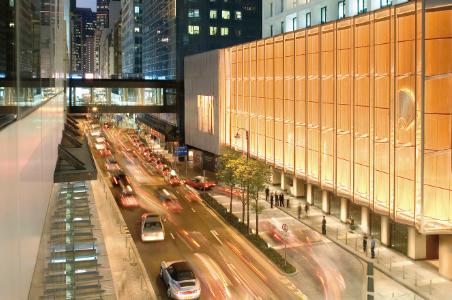
If the Mandarin Oriental Hong Kong is a cosmopolitan elder statesman oozing colonial-era charm, The Landmark Mandarin Oriental is a young, hip fashionista radiating sophistication. Opened in 2005 in a glitzy shopping center of the same name (the Landmark), this property is nothing short of spectacular, proposing an elegant home-away-from-home right in the center of the bustling Central district. For travelers who might find the old-school service of The Peninsula or MOHK a bit too fussy, The Landmark is an ideal upscale lodging alternative while visiting Hong Kong.
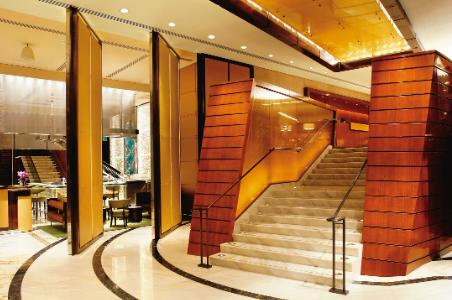
From top to bottom, The Landmark Mandarin Oriental feels like a well-designed luxury apartment building. Located up a small flight of stairs, the perfumed lobby is relatively small and discreet, not a destination in and of itself, as is the case at most of Hong Kong’s marquee hotels. With only 113 rooms and suites, the hotel never feels crowded, and the steady stream of in-the-know locals who come here for the award-winning spa and restaurants also add to the non-touristy ambience. The only thing missing here is a view of Victoria Harbour and the Hong Kong skyline (which many other top-tier properties in the city offer), but even that fact lends itself to the feeling that this isn’t just a hotel.
Rates: There are five room types, with rates from $630/night; two suite options start at $1,030/night.
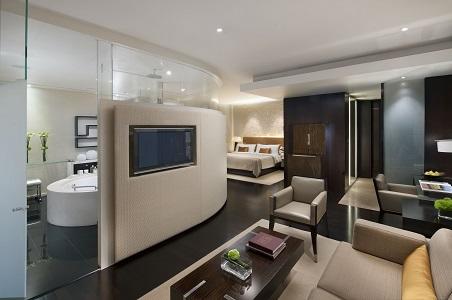
Rooms: The Landmark Mandarin Oriental’s guestrooms are among the largest in Hong Kong, averaging 540 square feet. In fact, at 450 square feet, the standard rooms are already the largest in the city. Adding to the ample square footage is the space-maximizing room design, with the flow of the bathroom, bedroom, and living space feeling connected, yet separate. Views are of an atrium or nearby city buildings, which may not thrill guests looking for a jaw-dropping vista, but that seems like a small concern in a destination where you can take in the skyline from so many other vantage points.
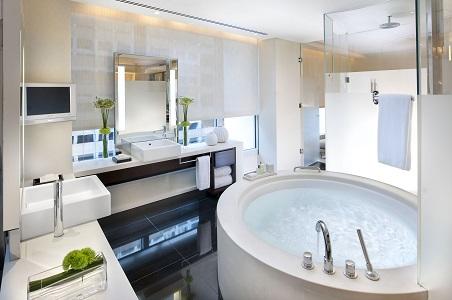
All rooms feature a contemporary color palette and excellent appointments: goose-down bedding by Ploh, Frette bathrobes, multiple HD LCD televisions, Nespresso coffee machines, and high-quality audio systems that are compatible with personal devices. The elegant bathrooms come with rounded bathtubs, rain showers, dual vanities and sinks, and high-end, chemical-free grooming products by Sodashi (higher-tier rooms and suites feature products by Jo Malone).
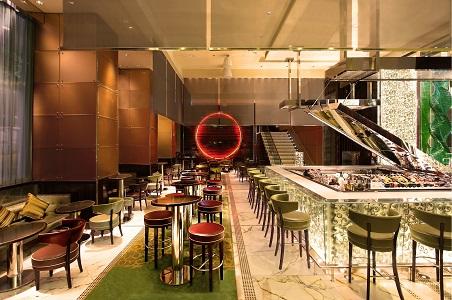
Drinks & Dining: Located on the ground floor, the two-story MO Bar offers all-day dining and beverage service (including a popular high tea). Occasionally, the space hosts live concerts; past performers have included Alicia Keys, Harry Connick, Jr., and John Legend. For fine dining, two-Michelin-starred Amber serves up modern French cuisine in an airy space; it’s been counted among the world’s 50 best restaurants (on San Pellegrino’s list) several years in a row.
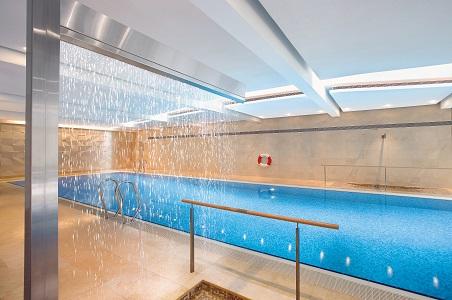
Health & Fitness: Offering a wide range of Eastern- and Western-inspired treatments, The Oriental Spa ranks among the city’s best spas and stands out, in particular, for importing world-class aestheticians and treatments from other countries. The Landmark also offers guests access to an indoor pool, yoga and Pilates facilities, and a high-tech fitness center with a full range of cardio and weight-training equipment.
Etc.: The Landmark Mandarin Oriental is just a short distance from the Mandarin Oriental Hong Kong, but you can skip the busy streets of Central and travel between the two properties using pedestrian footbridges and shortcuts through the Landmark shopping center.
Pros: Understated, supremely elegant service and accommodations; award-winning facilities and restaurants; a dream location in the middle of Central.
Cons: No views of the harbor or skyline.
-
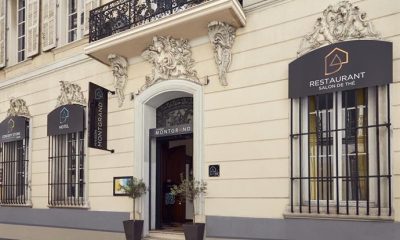
 France6 years ago
France6 years agoHotel Maison Montgrand – Vieux Port
-
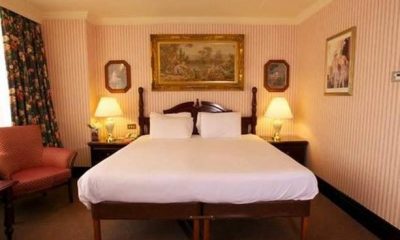
 United Kingdom6 years ago
United Kingdom6 years agoBritannia International Hotel Canary Wharf
-
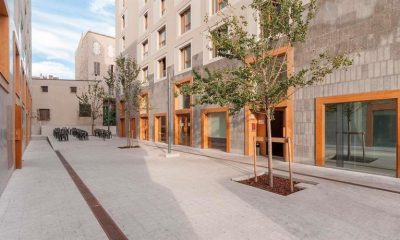
 France6 years ago
France6 years agoAppart’City Marseille Euromed
-
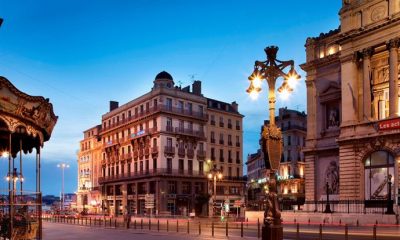
 France6 years ago
France6 years agoEscale Oceania Marseille Vieux Port
-
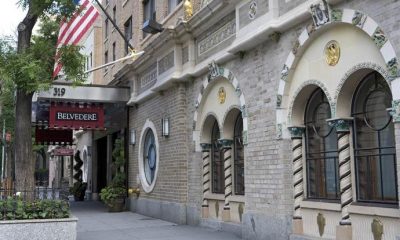
 USA6 years ago
USA6 years agoThe Belvedere
-
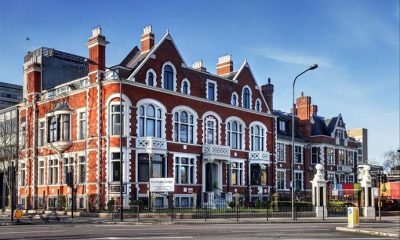
 United Kingdom6 years ago
United Kingdom6 years agoBest Western London Peckham Hotel
-
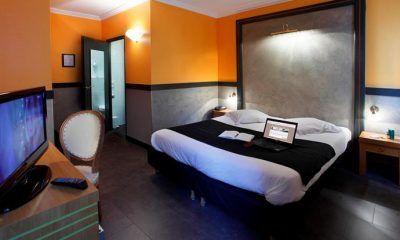
 France6 years ago
France6 years agoAdonis Marseille Vieux Port
-
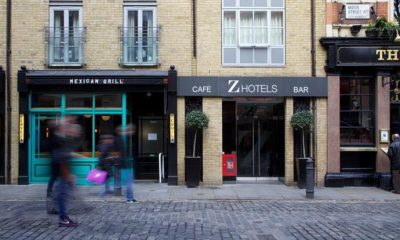
 United Kingdom6 years ago
United Kingdom6 years agoThe Z Hotel Soho


